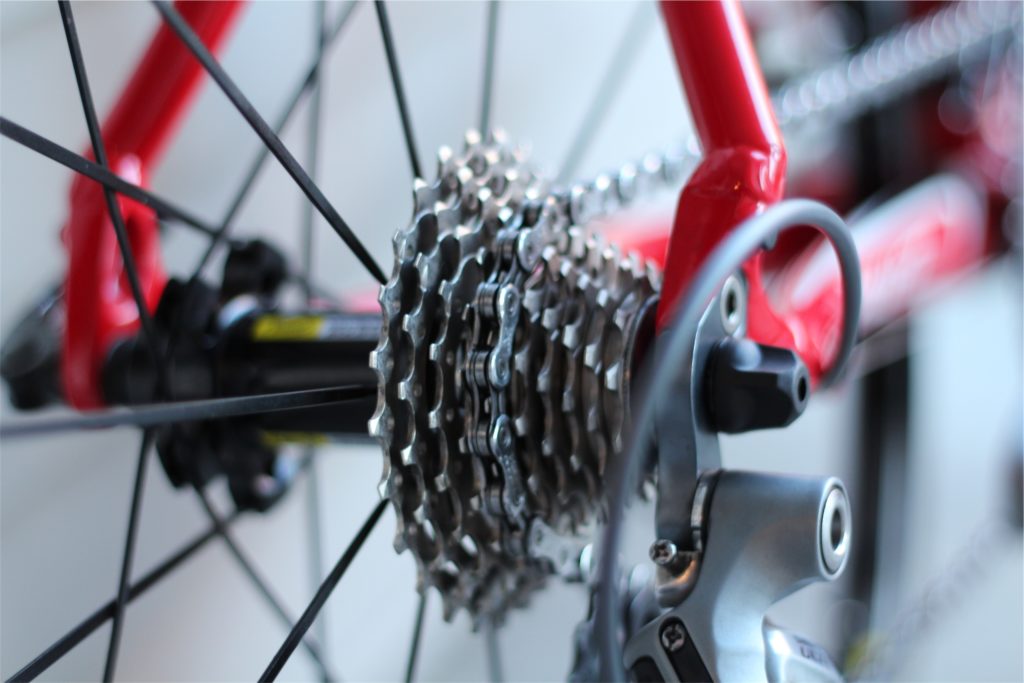Pedalling is a low-impact activity that improves muscle tone without stressing your knee and ankle joints.
Cycling is particularly good for cardiovascular fitness, which means reduced risk of heart attack and stroke. Nevertheless, injuries can occur, both as a direct result of cycling and in accidents. Incorrect riding posture and demanding too much of your body can lead to a variety of cycling-related injuries.
What are the most common cycling injuries and how can they be prevented?
Knee Pain
The knee is the most common site for overuse injuries in cycling. Patellofemoral syndrome, patella and quandriceps tendinitis, and iliotibial band friction syndrome are a few of the more common knee overuse injuries. The first three injuries mentioned involve pain around the kneecap, while the last condition results in outer knee pain.
To prevent knee injuries:
• Slowly build up your strength through training to minimise strain on the knees, and reduce the amount of hard training or hill work.
• Pedalling in high gear for a long time will stress your knee joints. Switch to lower gears whenever you can.
• If your saddle is too high or too low, stress is placed on the knees. Adjust your saddle’s height so you can just straighten your knee with the ball of your foot over the pedal axle at its lowest position. Seek the advice of a professional bike fitter to determine the appropriate height for your saddle.
• Shoe implants, wedges beneath the shoes, and cleat positions may help prevent some overuse injuries.
• Most knee pain on the bike has almost nothing to do with the knee itself. Commonly overuse-related knee pains are due to weakness or tightness of the muscles of the hip and pelvis. Consult with one of our physiotherapists regarding an exercise program for the deep hip and lumbo-pelvic muscles.
Head Injuries
One of the most common injuries suffered by cyclists is a head injury, which can be anything from a cut on the cheek to traumatic brain injury. Wearing a helmet may reduce the risk for head injury by 85%. Helmets are readily available for purchase and typically low in cost and are required by law on NSW roads.
Neck and Back Pain
Cyclists most likely experience pain in the neck when they stay in one riding position for too long. An easy way to avoid this pain is by doing shoulder shrugs and neck stretches that help relieve neck tension.
Improper form also leads to injuries. If the handlebars are too low, cyclists may have to round their backs, thus putting strain on the neck and back. Tight hamstrings can also cause cyclists to round or arch the back, which causes the neck to hyperextend. Stretching these muscles on a regular basis will create flexibility and make it easier to maintain proper form.
The back is a weak link for many riders. Cyclists usually develop strong leg muscles, but don’t always have the torso strength to support and resist the force from the legs. This can make your back work too hard and spasm, causing rapid fatigue.
To prevent lower back pain, get into the habit of keeping your back straight while riding. This will ease the pain and also improve your riding.
Shoulder Pain
Injury to the shoulder usually occurs during longer rides. It is mainly caused by placing too much weight on the hands, and riding with straight elbows.
To prevent or remedy shoulder pain, keep the elbows slightly flexed to stop ‘road shock’ transferring to the arms and upper body.
Wrist/Forearm Pain or Numbness
Cyclists should ride with their elbows slightly bent (never with their arms locked or straight). When they hit bumps in the road, bent elbows will act as shock absorbers. This is also where changing hand positions will help reduce pain or numbness. Two common wrist overuse injuries, Cyclist’s Palsy and Carpal Tunnel Syndrome, can be prevented by alternating the pressure from the inside to the outsides of the palms and making sure wrists do not drop below the handlebars. The grip should be firm yet relaxed. In addition, try padded gloves or handlebar tape to reduce any vibration and stretching the hands and wrists before riding.
Children aged 10 years or younger are at risk of trapping their fingers in the moving parts of a bicycle, such as the chain. Children should be warned about these hazards. Consider buying your child a bicycle with a chain guard.
Urogenital Problems
One common complaint from male riders who spend a lot of time riding is pudendal neuropathy, a numbness or pain in the genital or rectal area. It is typically caused by compression of the blood supply to the genital region. A wider seat, one with padding, a seat with part of the seat removed, changing the tilt of the seat, or using padded cycling shorts will all help relieve pressure.
Foot Numbness and Tingling
Numbness (or ‘burning feet’) is most commonly caused by nerves being squashed. This is usually due to shoes that are too tight or narrow, road vibration or too much climbing (which puts continuous pressure on the feet). In addition, foot numbness can be due to exertional compartment syndrome. This arises from increased pressure in the lower leg and resulting compression of nerves.
To prevent or reduce numb toes:
• Adjust your shoes, or the straps or cleats on your cycling shoe.
• Make sure your feet are straight when you clip into the pedals (if you use cleats).
• Remove any irregular seams, straps or buckles from your shoe that may be pressing against your foot.
Tips for avoiding cycling injuries
Cycling is an extremely repetitive sport that involves long duration and high-intensity training—which can ultimately lead to injury. The following injury prevention techniques can help you perform at a higher level and reduce your risk of overuse:
Warm-up
You’ve heard it before, but a proper warm-up is essential to prepare the body for a ride and to avoid an injury. The main muscles at work in cycling are the calves, hamstrings and quads, so try and incorporate some stretching of these areas in your warm-up.
During the workout
Keep your cadence at 90 rpm or greater to reduce stress on the knee, specifically the patellofemoral joint (kneecap joint). High-intensity training at lower rpm may have rewards but also comes with greater injury risk.
Post-workout
Use the foam roller to reduce muscle soreness and tightness. Focus on the iliotibial band, quadriceps and gluteal muscles.
Get a professional bike fit
In a sport based on such a highly repetitive action — pedalling — the first line of defense against injury is a proper bike fit.
Gear
Assuming that a professional bike fit has been done, take note of saddle height and fore/aft position. Always check measurements when traveling with the bike and after a bike crash.
Shoes
Tighten cleat screws/bolts, as they sometimes loosen and cause the cleat to shift. Overuse injuries can be created if the cleat shifts too far forward or back, increasing stress on the knee.
Cycling safety tips
Reduce your risk of accidental injury while cycling by:
• Assuming that car drivers have not seen you. Make eye contact with car drivers when negotiating turns or intersections.
• Braking smoothly. Hard braking is a common cause of cycling injuries, as it can cause the brakes to lock and the rider to fall over the handlebars. Children need careful instruction on how to brake safely.
• Not wearing headphones while cycling. You need to hear what’s going on around you.
• Having your bicycle professionally serviced at least once every year.
• Regularly checking your bike (once a week if you’re a frequent rider) to make sure it is in good repair. Check the tyres and tyre pressure, bearings, gears, nuts and bolts, and lubricate the chain and cables. If you’re not sure how to do this, consult your local bike shop.
Listen to your body
Your body will let you know if something is wrong. Pushing through an injury can often lead to a worse outcome and more time off the road. Have niggles and injuries assessed and managed by one of our physiotherapists. We can prescribe an appropriate strengthening and flexibility program including core exercises and weight training, and can assist training modifications to get you back onto the road quicker without aggravating any injury concerns.
For more information regarding injury prevention or to arrange an assessment aimed to correct any predisposing biomechanical risks contact one of the physiotherapists at Jubilee Sports Physiotherapy.






















